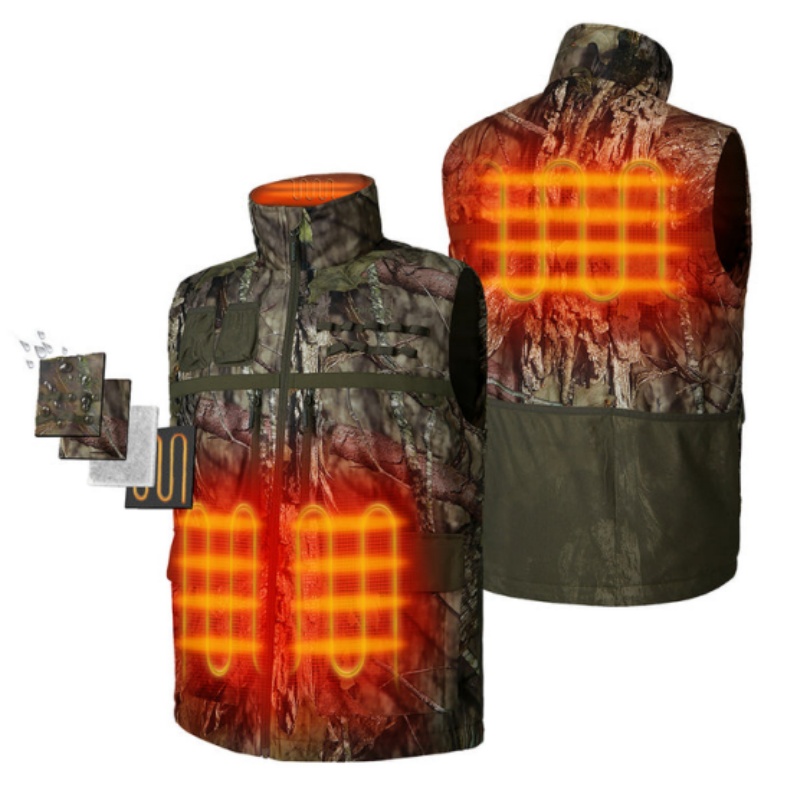As the cold months encroach upon our daily routines, the quest for warmth becomes paramount. Heated vests, those marvels of modern technology, promise not just comfort but also an escape from the biting chill of winter. However, lurking beneath their cozy allure lies a question that necessitates exploration: Are heated vests detrimental to your health? In this discourse, we will navigate this terrain, unveiling the interplay of warmth and well-being.
Understanding the mechanics of heated vests is crucial for grasping their impact. Typically, these garments are imbued with heating elements, often made from carbon fiber or metal, which generate warmth when connected to a power source, usually a rechargeable battery. The fundamental premise is alluring—the promise of adjustable warmth tailored to individual preferences. But does the infusion of technology into clothing provoke an array of health concerns? Let’s delve deeper.
To begin with, let’s examine the primary concern that springs to mind: electromagnetic fields (EMFs). The heating elements embedded in heated vests generate EMFs, but to what extent do these pose a risk? Scientific consensus indicates that low-level, everyday exposure to EMFs is generally considered safe. Nevertheless, prolonged exposure may evoke anxiety among cautious consumers. The key, as with many modern conveniences, lies in moderation. Short-term use of heated vests is unlikely to yield adverse effects, allowing you to enjoy cozy warmth without an overwhelming sense of dread.
Another dimension to consider relates to skin health. Heated vests create a microclimate, increasing local temperatures against the skin. While this can be invigorating, there’s potential for overheating and irritation, especially for individuals with sensitive skin or pre-existing dermatological conditions. Prolonged exposure to excessive heat can lead to thermal burns or exacerbate existing skin ailments. Thus, it’s prudent to monitor how your skin reacts during initial wear, gradually increasing usage time to gauge comfort levels.
Equipped with these insights, it’s essential to highlight the myriad benefits that heated vests can provide for your health. For individuals suffering from conditions exacerbated by cold, such as arthritis or Raynaud’s syndrome, these warm garments can be transformative. The warmth stimulates circulation, alleviates pain, and enhances overall mobility. Such benefits can make winter activities more enjoyable, allowing individuals to engage in their favorite outdoor pursuits without debilitating discomfort.
Additionally, consider the mental health implications of warmth. The body’s temperature can influence mood and cognitive function. Cold environments often correlate with increased stress levels, while warmth tends to promote relaxation and a sense of well-being. A heated vest can serve as a psychological refuge, a cocoon of comfort that enhances outdoor experiences. The ability to venture outdoors in wintry conditions, clad in a cozy, warm vest, can improve mental fortitude and foster feelings of positivity.
Nevertheless, it’s essential to exercise caution and adopt best practices when utilizing heated vests. One prime recommendation is to opt for quality products from reputable manufacturers. Inferior materials not only contribute to less effective heating but may also raise safety concerns. Look for features such as auto shut-off options, which prevent overheating, and breathable fabrics that allow moisture management, ensuring you don’t overheat while enjoying their benefits.
Moreover, wear heated vests in conjunction with appropriate layers. This stratified approach mitigates overheating risks, as the vest can efficiently retain heat without causing excessive perspiration. Integrating moisture-wicking base layers underneath can optimize temperature regulation, ensuring comfort even during rigorous outdoor activities. Remember, layering is essential for adapting to fluctuating temperatures, so stay smart while keeping warm.
While heated vests offer substantial benefits, remember that they are not a panacea. It’s critical to listen to your body. If discomfort arises—be it excessive warmth, skin irritation, or unusual sensations—it’s wise to remove the vest and reassess its suitability for prolonged wear. Consulting a healthcare provider can provide clarity, particularly for those with underlying health issues concerned about heat exposure.
In conclusion, heated vests present a unique convergence of warmth and health. Exploiting their potential can elevate winter experiences, safeguard against cold-induced ailments, and enhance overall well-being. Amid the myriad of winter apparel choices, these vests stand out not merely as clothing but as instruments of comfort and mobility. Navigating their use judiciously allows individuals to savor the exquisite blend of warmth and health without succumbing to potential drawbacks. So, as you prepare for the season’s chill, consider the heated vest not just as an accessory but as a herald of warmth and comfort—one that eschews the freezing temps for an embrace of delightful coziness.
